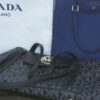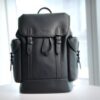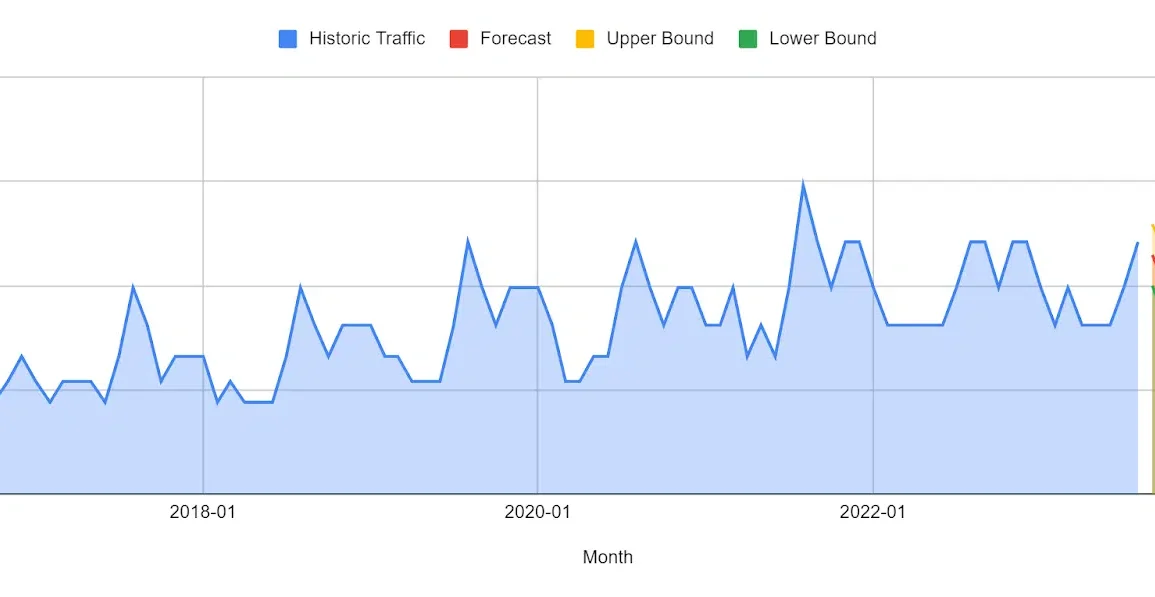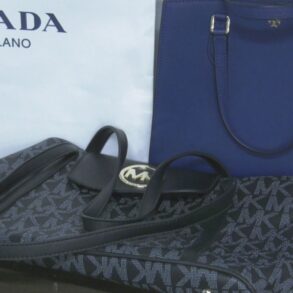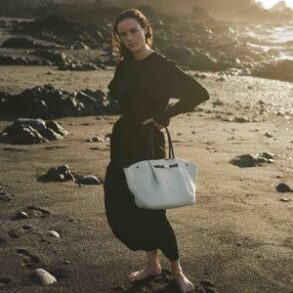Fashion ecommerce is going through a period of change. Brands are under increasing pressure from consumers and market forces to become more sustainable and less wasteful, especially in fast fashion.
As a result:
- Several brands are starting to charge customers for returning online purchases.
- Resale ecommerce, or “recommerce,” is growing quickly and entering the mainstream.
- Users are being reminded to make more sustainable buying choices, turning more toward thrift.
Users are also moving away from using Google for discovery and utilizing Amazon and TikTok more.
This shift in the market and consumer means data is more important than ever, and the ability to forecast and monitor the changes in buyer behavior.
Given the amount of data available to us from multiple sources, we’re now in the strongest position possible to monitor demand changes and create forecasts.
The core focus of trend analysis in ecommerce should always be to:
- Identifying opportunities for value creation.
- Informing SEO (and general marketing) activities for maximum impact.
- Creating stronger messaging to better meet user expectations at the right time.
Here are some examples of how we provide more value in the ecommerce fashion sector by leveraging search data effectively.
Multiplatform trend analysis
Both resale and rental are emerging consumer trends in fashion. For this example, I’ll use handbags as a data source.
Users shop across multiple platforms, so we must not only focus on Google when performing any trend analysis for ecommerce.
Consider other shopping and product discovery platforms such as Amazon and TikTok.
To do this at a simple level, we can:
- Take a set of search terms, in this case, the top 50 related keywords by U.S. monthly search volume (MSV) when looking at “large handbags” as a root topic.
- Compile 12 months’ worth of MSV data, TikTok search trends, eBay and Amazon search data.
If we take this data as a whole set, we can actually see that in the months’ Google search declines around “large handbags,” the search velocity in other platforms remains higher (relative to platform search demand).
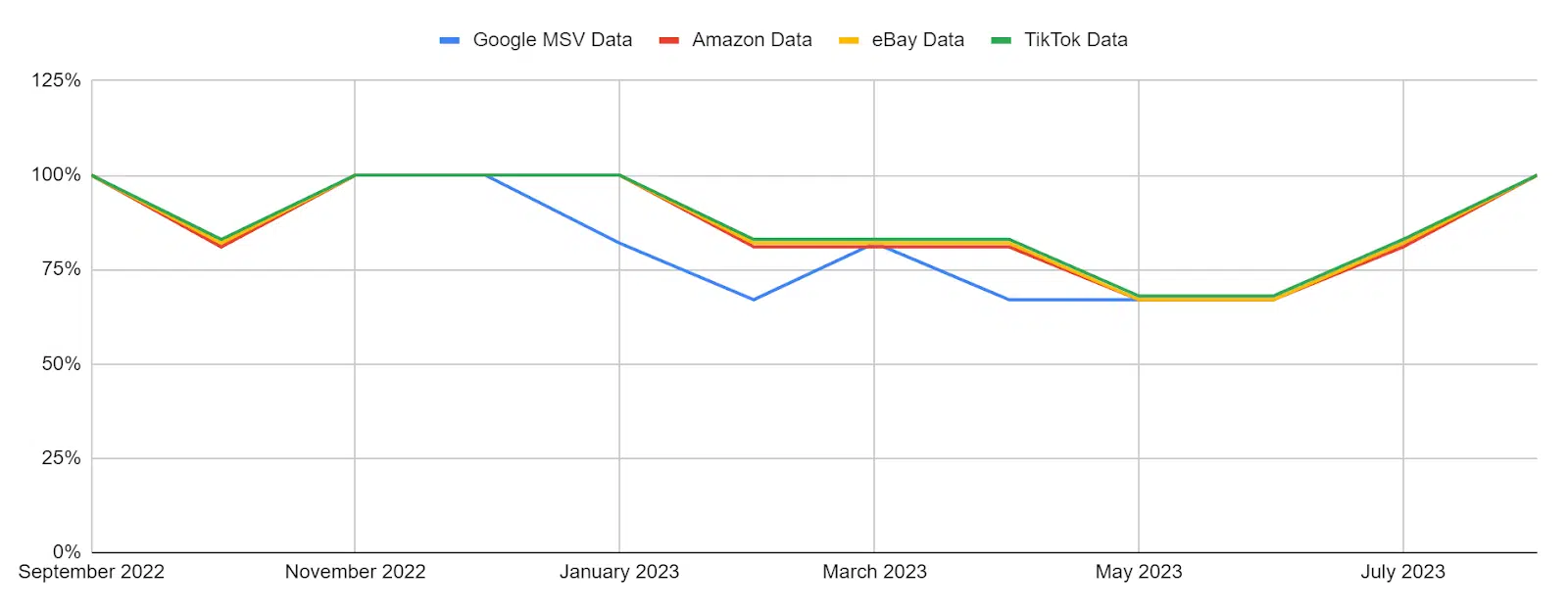
We can then drill down into this data more and look at additional modifiers of “large handbags,” such as “luxury” or “on-sale.”
Seeing the search demand data over four different product discovery platforms also allows you to forecast user demand, taking into account that users in your target market are potentially using more than just Google to discover products.
The easiest way to display this is through a Bayesian Structural Time Series (BSTS) graph:
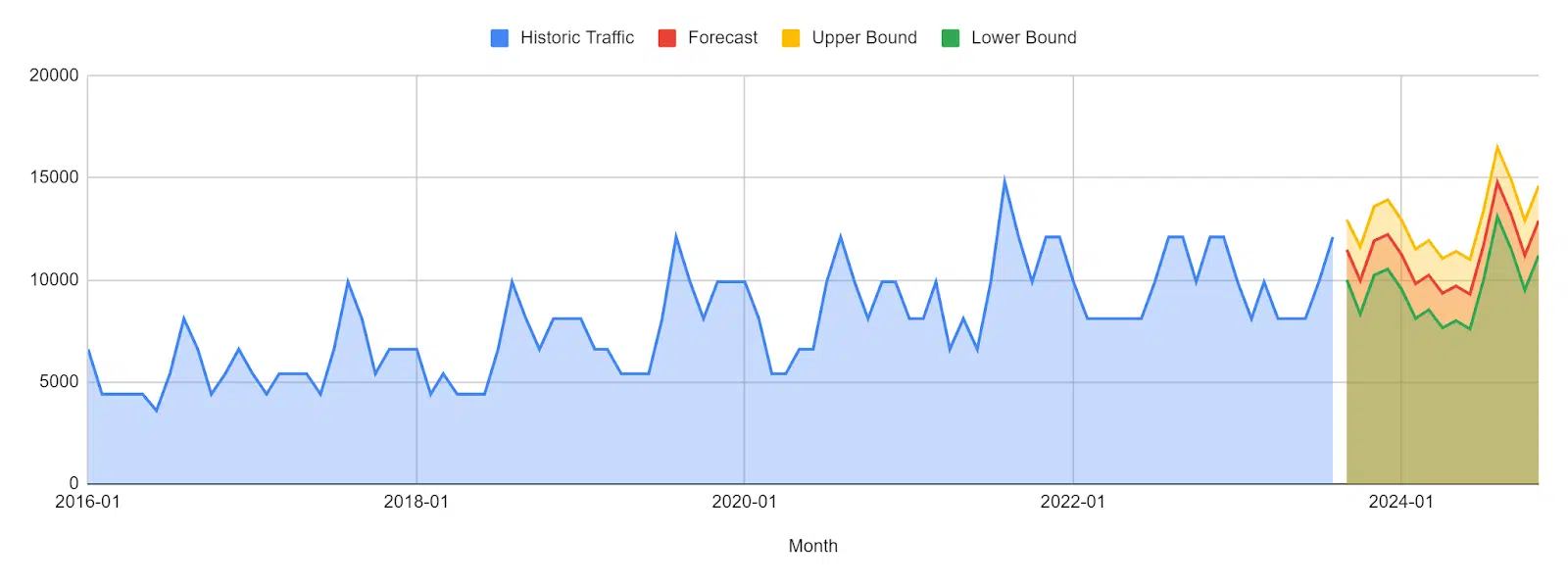
You can do this via Google Sheets, as I have above, or you can use RStudio to model traffic graphs with different ranges and periods by following this RStudio forecasting guide.
Dig deeper: Ecommerce SEO & UX: 4 simple tips to boost traffic and sales
Get the daily newsletter search marketers rely on.
Opportunity products
Using the same demand modeling (with data from periods over time), we can also identify “opportunity products” across a catalog.
For example, suppose you have an ecommerce website specializing in luxury fashion. In that case, you can take your product categories (or a specific brand) and model products against each other to find demand correlations.
These correlations can then:
- Create product opportunities for cross-selling and cross-merchandising.
- Influence your email and social channels.
- Be used to influence helpful user content such as style and “wear the look” guides for added value.
Let’s use the brand Van Cleef & Arpels for the data example below.
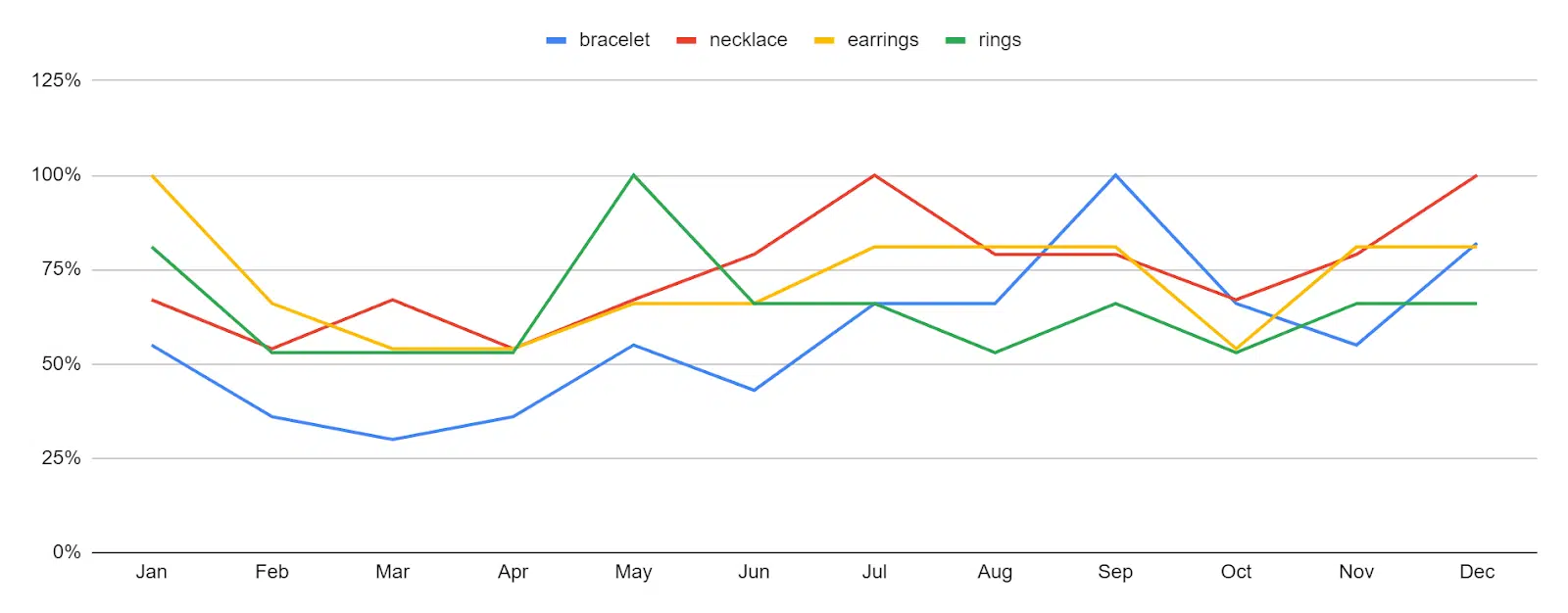
We’d expect all four product categories to see an increase in demand around December/January in line with seasonal demand for most luxury items.
We can also identify that during July, August and September, search demand for Van Cleef & Arpels earrings and necklaces has a small peak. In September, bracelets also hit peak search velocity.
With early knowledge of a correlating product trend, fashion businesses can:
- Coordinate omnichannel marketing efforts.
- Produce content that aligns with the trend.
- Set up targeted ads.
- Collaborate with influencers who resonate with the product’s appeal on platforms where a brand may not have a strong presence, such as TikTok or Instagram.
Tangential search trends
The final use case for better data usage I want to cover is identifying trends between your fashion products and tangential searches.
A great example of this is exploring the relationship between athletic wear and users wanting to make healthier lifestyle choices.
To do this, we need to overlay gym/athletic wear clothing searches with a tangential topic the same user audience may be searching for, like workouts.
Very quickly, we can see that both Amazon and Google reach peak search velocity for gym/athletic wear around January and February (as we’d expect with what we know of the topic’s seasonal trends) before seeing some uptick again toward the end of the year.
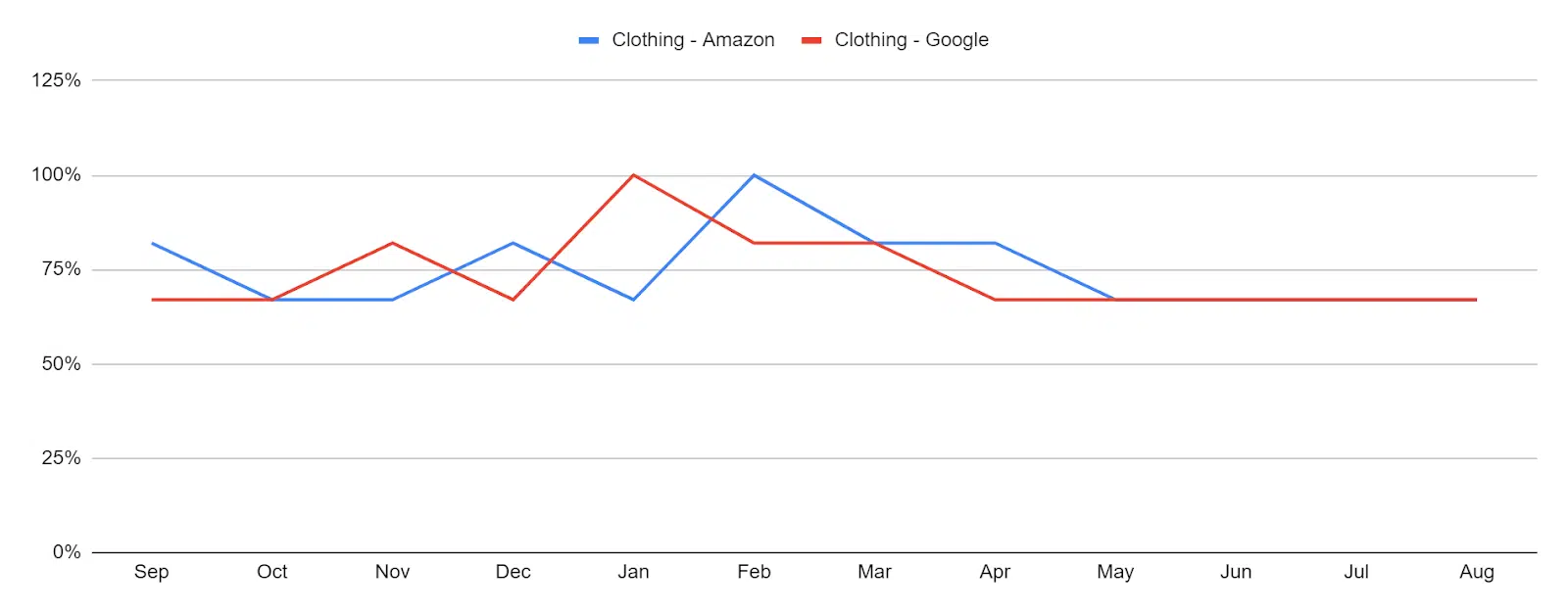
When we look at users searching for workouts and workout ideas, we see that both Google and TikTok have a consistent search velocity the whole year round (compared to workout clothing searches).
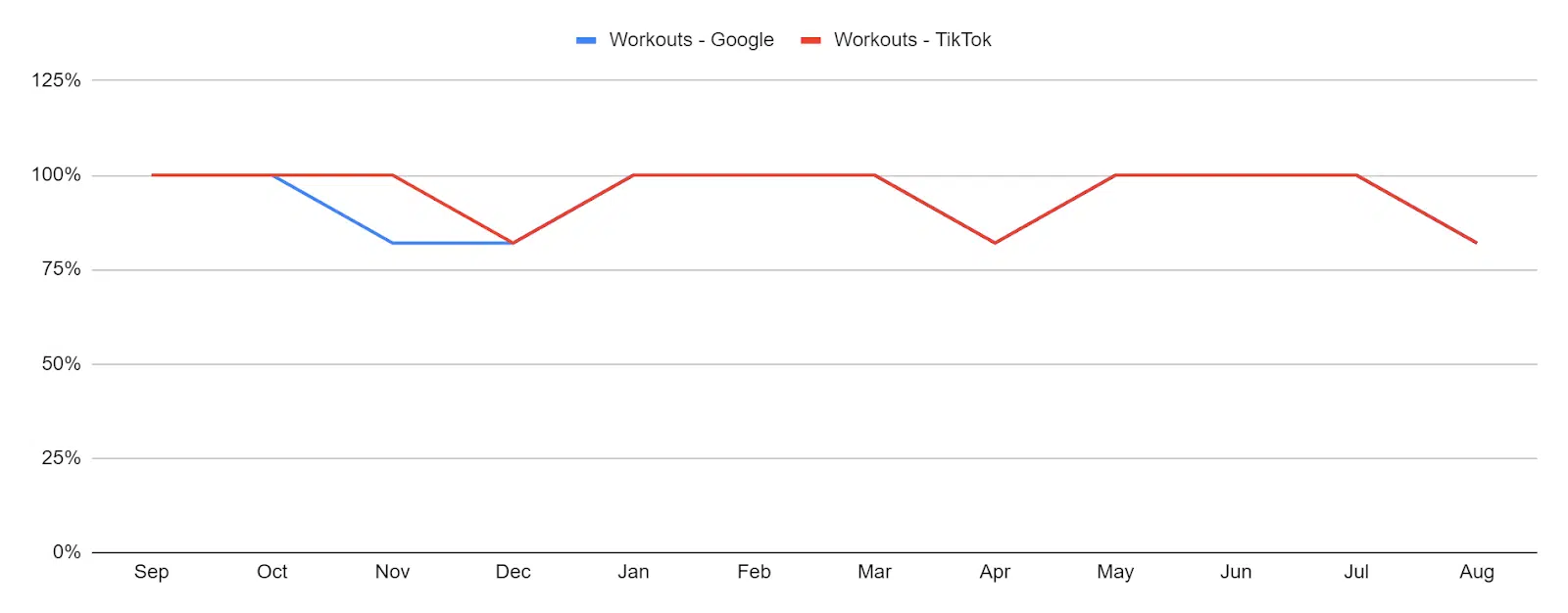
With data supporting this, we can justify creating content and messaging across multiple platforms that actively works to engage our target customer all year round, even when they’re not in the peak buying cycle.
The more positive brand touchpoints we create in this way, the more we can build trust and, hopefully, brand demand. This can help influence Google’s perception of the domain/brand when assigning crawl resources.
Tangential trends can also extend to other product use cases, sporting events, television shows, or other pop culture and media elements that influence a buyer’s decision-making.
The ecommerce imperative: A holistic, search data-led approach
Different demographics are adopting platforms like TikTok to discover products and information and make product purchases.
TikTok sees ecommerce as a growth play and has ambitions to quadruple its operations and achieve $20 billion in sales.
That’s why, as a fashion brand, it’s vital to take a holistic approach when analyzing your search demand, researching keywords, and crafting your content and messaging strategy.
This approach helps establish a strong organic presence and guides other channels in maintaining a consistent brand message.
Dig deeper: Ecommerce marketing next year: 5 ways to set up for success
Opinions expressed in this article are those of the guest author and not necessarily Search Engine Land. Staff authors are listed here.
Related stories
New on Search Engine Land
This post was originally published on this site be sure to check out more of their content.

